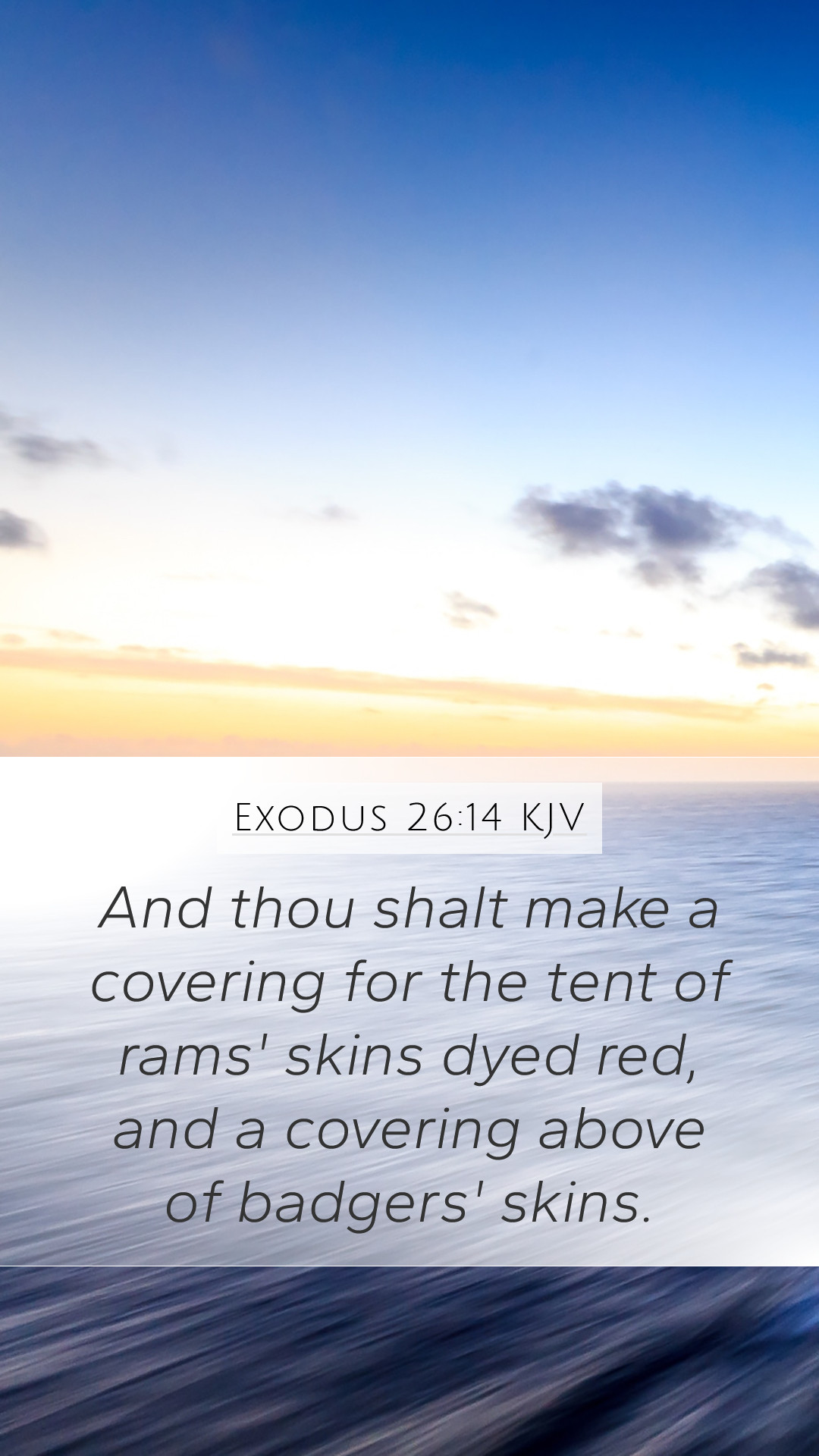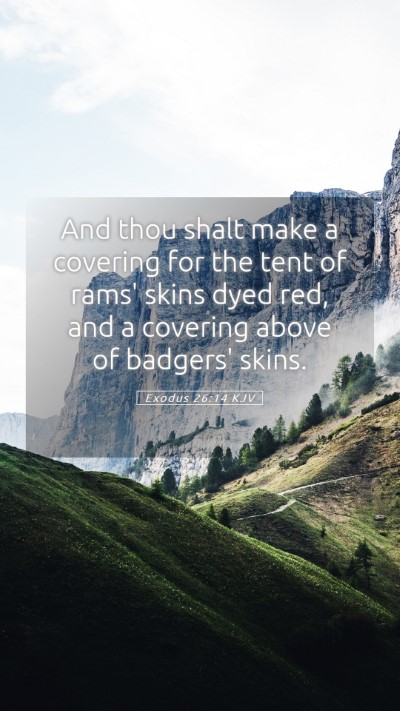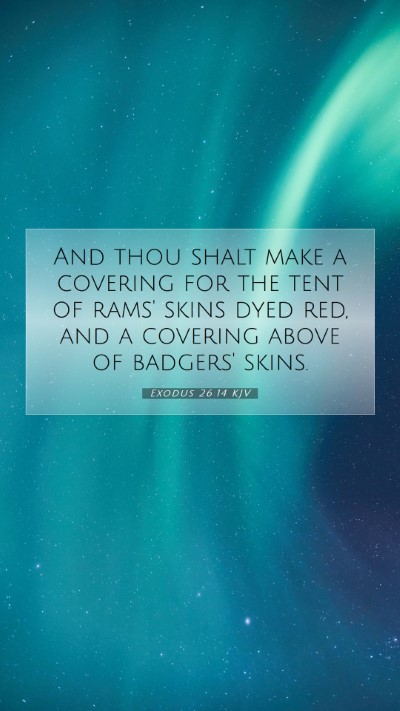Understanding Exodus 26:14
Bible Verse: Exodus 26:14 - "And thou shalt make a covering for the tent of rams' skins dyed red, and a covering above of badgers' skins."
Overview
Exodus 26:14 discusses the materials used in constructing the tabernacle, focusing on the coverings necessary to protect the sacred space. The details serve both practical and symbolic purposes in the worship of God.
Commentary Insights
-
Matthew Henry's Commentary:
Matthew Henry emphasizes the significance of the materials, particularly the rams' skins dyed red, suggesting a symbol of sacrifice and atonement, while the badgers' skins represent protection and concealment of divine presence from the outside world.
-
Albert Barnes' Notes:
Barnes points out that the use of dyed skins demonstrates preparation for worship and the holiness of the tabernacle. Each layer of covering indicates the layers of separation between God and man, reinforcing the sacredness of the tabernacle's functions.
-
Adam Clarke's Commentary:
Clarke highlights the practical use of these materials in ensuring durability against the elements. He also connects the coverings to themes of sacrifice and the hidden divine nature, emphasizing how God's presence was among his people, yet separate from them.
Bible Verse Meanings
This verse encapsulates key themes in theological study and biblical interpretation:
- Symbolism of Sacrifice: The rams’ skins dyed red symbolize the sacrificial system that is foundational in both the Old and New Testaments.
- God's Protection: The badgers' skins provide a metaphor for God’s protection over His creation, the coverings signifying divine oversight and safeguarding.
- The Concept of Holiness: The coverings serve to illustrate the need for purification and separation when approaching God.
Scripture Analysis
Exodus 26:14 is not an isolated verse but part of a comprehensive narrative regarding God's instructions for the Israelites in worship. It opens discussions on:
- Understanding Scripture: Scholars examine how each element contributes to understanding God's nature and His covenant with His people.
- Biblical Exegesis: It invites deeper analysis of how these instructions shaped the spiritual and communal life of the Israelites.
- Historical Context: Understanding the environment in which these instructions were given helps demonstrate their significance.
Application of the Verse
The lessons drawn from Exodus 26:14 can be applied to modern worship practices and spiritual disciplines:
- Preparing for Worship: Just as the tabernacle required specific preparations, believers are encouraged to prepare their hearts for worship.
- Understanding God's Presence: The layering of coverings encourages reflection on how we perceive and approach God's holiness.
- Emphasizing Sacrifice: Recognizing the cost of atonement enhances appreciation for the ultimate sacrifice of Christ.
Cross References
- Hebrews 9:1-5: Discusses the layout and significance of the tabernacle.
- Exodus 25:4: Details the materials used for constructing the sanctuary.
- Leviticus 16:6-10: Relates to the themes of sacrifices and atonement associated with rams.
Conclusion
Exodus 26:14 provides rich insight into the early practices of worship, combining practical instructions with deep spiritual meanings. By understanding the significance of these coverings, individuals can gain a greater appreciation of God’s holiness and the requirements for communion with Him. This verse serves not just as historical context but as a reflective mirror for believers in their personal and communal worship experiences.


